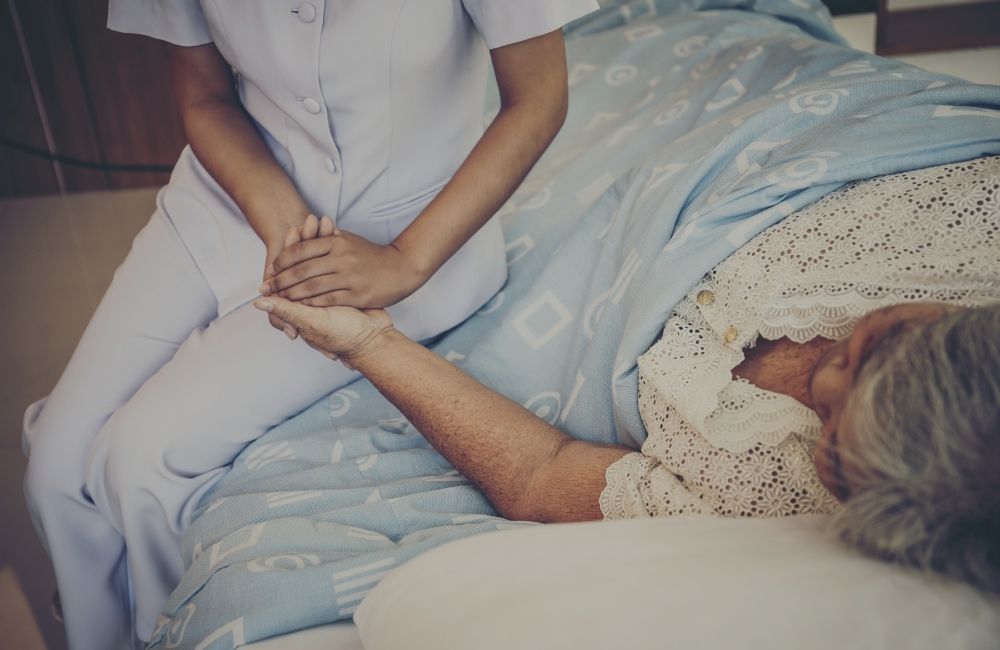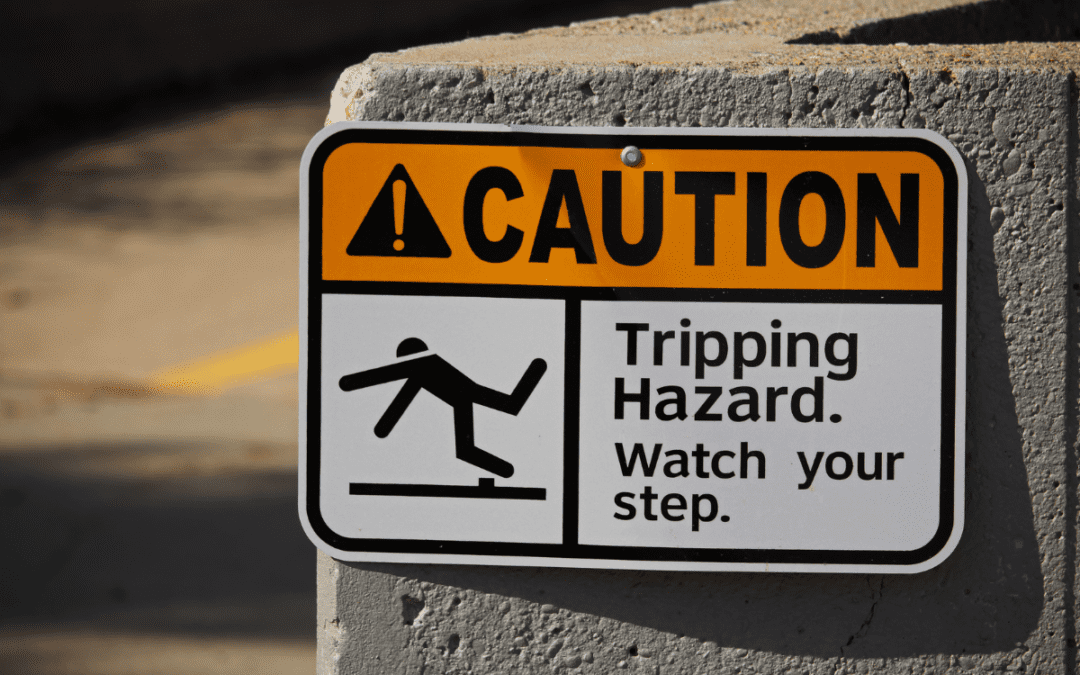Elder Abuse in Nursing Homes often goes unnoticed. Here are ten commonly missed signs that you should look out for.
We are all getting older every day.
Florida ranks at the top in the number of full-time and seasonal residents 65 years old and older. Nationwide, the elderly population is expected to reach 88 million by 2050.
These figures underline the prevalence of long-term care facilities and other services in Florida. According to the Florida Health Care Association, approximately 71,000 Floridians occupy the state’s 84,448 beds across 691 licensed nursing homes.
Proper service standards
Elderly people have many physical and psychological challenges inherent to aging. For those reasons, nursing homes must provide competent, compassionate, and skillful care.
When the care is negligent, abusive, or otherwise deficient, your loved one could suffer significant physical, mental, emotional, and financial damage. The lack of care comes from unqualified, untrained, and improperly trained staff or from physicians and other health care professionals failing to follow proper medical standards.
Below, we profile ten commonly missed signs of nursing home abuse. Long-term care providers may try to dismiss these as inevitable marks of the aging process. Before you allow them to convince you of this, consider that nearly ten percent of those age 60 years and older have suffered through elder abuse.
1. Bedsores
Bedsores may not seem ominous at first blush. However, these pressure ulcers can cause cancer and infect joints and bones. The infections damage and limit your or your loved one’s ability to use ankles, elbows, legs, and arms. Bedsores prove costly. Nationwide, treatment of bedsores runs nearly $1 billion and increases hospital charges by $20,000 on average.
As simple as they may sound, bedsores can be fatal
In some cases, bedsores lead to a potentially fatal condition known as sepsis. A person with sepsis suffers inflammation when chemicals enter the bloodstream to combat infections. The aftermath can include organ damage and death. According to one study, as many as six out of every ten elderly people die within one year after the onset of bedsores.
This form of elder abuse and neglect has become increasingly present in nursing homes. As many as 30 percent of long-term care patients have bedsores. Bedsores are ulcers that arise when the bone applies prolonged and unrelieved pressure to the skin. In nursing homes, patients tend to remain constantly in beds or wheelchairs. Such is often the result of neglect in nursing home staff adequately monitoring and caring for residents.
2. Dehydration and Malnutrition
Malnourished and dehydrated residents are major signs of nursing home abuse and violations of the law. Under federal statutes and regulations, nursing homes must evaluate a resident’s level of nutrition upon admission and every three months. Nursing homes must develop food and water plans based on the initial assessment.
For the nearly 40 percent of nursing home residents suffering from dehydration and malnourishment, the consequences include osteoporosis, fatigue, infections, seizures, heat exhaustion, and shocks that drop blood pressures to critical levels. If your loved one doesn’t have a healthy diet or eating habits in a nursing home, vitamin deficiencies and kidney failures can arise.
3. Fatigue or Insomnia
The lack of adequate nutrition, water, physical activity, and medical care manifests itself often in tired residents. Nearly half of nursing home residents experience fatigue. One study of 334 long-term care residents revealed over 70 percent had some disturbance of sleep. Insomnia can run at higher rates among those in nursing or long-term care facilities than in the general public.
Culprits for fatigue and insomnia include medications, depression, discomfort arising from bedsores or other health conditions, and lack of movement. Lack of coordination, poor walking patterns, social withdrawal, increased fall risks, and loss of body function represent other serious side effects. According to the Centers for Disease Control, death rates from falls of those at least 65 years old grew by 30 percent from 2009 to 2018. The CDC estimates 54 to 68 deaths per every 100,000 in Florida in 2018 from falls.
Along with examining the neglect of nursing home staff, an elder abuse attorney in our firm may explore a malpractice claim against your loved one’s physician. Medication errors may account for a loss of sleep or related conditions.
4. Weight Loss
We see elder abuse in nursing homes from staff not ensuring that patients eat healthy, nutritional meals. Residents experience weight loss when the nurses, certified nursing assistants (CNAs), and others do not encourage eating or provide appropriate meals. Over 80 percent of nursing home residents require assistance in feeding and other daily activities such as dressing and bathing.
The reasons for lack of eating and the resulting weight loss may go beyond poorly-cooked meals or general neglect by staff. Your loved one may have underlying medical or dental conditions that discourage eating. This may require alternative forms of feeding or introducing nutrition. An elder abuse attorney pursues cases based on the failure of medical professionals to diagnose digestive disorders, develop appropriate feeding plans, or make reasonable efforts to address weight loss.
5. Bad Personal Hygiene
As you read above, at least eight out of every ten residents in long-term care need assistance with bathing and other activities of daily living. According to one study, 64 percent of residents require bathing assistance. In Florida, that rate stands at 67 percent. Nationally, four out of ten need help using the toilet. Approximately 45 percent of those in assisted living or nursing homes in Florida need such aid.
You may notice nursing home abuse if your loved one develops gum diseases, tooth decay, and other oral health problems in a nursing home. To be sure, elderly people might have dental problems even before reaching a nursing facility. The Centers for Disease Control reports that, among those 65 years or older, nearly 96 percent have a cavity. One-fifth of these adults experience tooth decay that has not been treated. Among other statistics:
- Overall, 20 percent of seniors do not have any of their natural teeth. That rate is 26 percent among those older than 75 years old.
- Nearly two-thirds have gum disease.
- Only one out of every ten residents have availed themselves of dental services in the nursing home.
- Another study reports that 87 percent of residents did not receive brushing or other basic dental care.
For many residents, poor dental care comes from a lack of transportation to dental offices or the lack of properly-trained nursing home staff. Chances are your loved one’s facility either does not have dental care at all or rely upon those other than dental hygienists to clean teeth. At some facilities, this task may fall to a CNA.
6. Anxiety and Depression
Sadly, some nursing home workers insult, intimidate, isolate, and commit other forms of psychological abuse on residents. According to the National Council on Elder Abuse, a third of responding nursing home residents reported psychological abuse.
Psychological abuse represents just one cause of depression and anxiety among the elderly.
Residents in nursing homes face financial abuse when staff members, family members, or others steal identities, forge documents, misappropriate funds, misuse credit or debit cards, and try to coerce, trick, or abuse positions of confidence and trust. Often, these culprits have or assume a close relationship such as caregiver, family member, guardian, conservator, or clergy.
Financial abuse places residents under added anxiety and stress from missing money or dealing with bills that don’t belong to them.
7. Aggressive or Violent Behavior
The abuse and neglect suffered by nursing home patients can cause them to turn angry, aggressive, or even violent. These behaviors are not necessarily just reactions to mistreatment by a nurse, assistant, or other staff workers.
When elder abuse in nursing homes involves neglect, residents often do not have proper personal hygiene. Urinary tract infections represent one consequence. Rather than mere discomforts, many psychological symptoms and problems befall those with urinary tract infections. Common ones include hallucinations, confusion, angry outbursts for no apparent reason, delusions, and agitation.
Alzheimer’s disease, depression or anxiety over declining health, and medications may also trigger aggression and violent acts toward you or other family members. An elder abuse attorney may examine medical records to determine if medication errors caused the sudden aggressive or violent behavior and if the physician failed to follow proper standards in prescribing the medicine. Such medication errors may include staff not administering doses as instructed by the physician or pharmacist.
8. Suicidal Thoughts
The COVID-19 pandemic has fueled the isolation often experienced by elderly people in nursing homes and other places. According to one study, 43 percent of adults at least aged 60 years old consider themselves lonely. This sense of isolation accounts for a 50 percent rise in the risk of dementia. A study of nearly 148,000 patients under care in the U.S. Department of Veterans revealed an increase of 44 percent in the risk of suicide attempts among those recently diagnosed with dementia.
Nursing homes act negligently by ignoring suicidal thoughts expressed by residents. The failure of staff to document or health professionals to follow up on suicidal thoughts exhibits neglect of the residents and potential malpractice.
9. Bruises or Cuts
Bruises or cuts are readily observable in elderly people. You might suspect that a loved one with these signs has been assaulted or otherwise physically abused. Many instances elude explanation, as the injury might not have occurred by assault.
However, a bruise or cut begs the question of whether your loved one was sufficiently monitored or supervised. As mentioned above, the elderly as a group have seen a 30 percent rise in the risk of falls from 2009 to 2018. With thinner layers of skin to cushion impacts to blood vessels, even a slight bump into an object can create a bruise or even cuts. Such injuries may arise from the failure of the nursing home to provide adequate lighting, remove liquids or obstructions from the floor, and other conditions giving rise to premises liability.
Easy bruising and bleeding from cuts may also signal that your loved one has a problem clotting blood. A failure of the nursing home to advise physicians or families of bruises so that medical conditions can be properly diagnosed and treated can also constitute elder abuse in nursing homes.
10. PTSD or Trauma
The signs of nursing home abuse we have discussed are also symptoms of post-traumatic stress disorder or trauma. Outbursts, nightmares, depression, anxiety, and avoidance can present themselves after a nursing home employee has either physically, sexually, or emotionally abused a resident. As with other signs we profile here, the manifestations of PTSD or trauma can be explained away as the presence of dementia, Alzheimer’s, and other conditions commonly associated with the aging process rather than elder abuse.
Conclusion
For these reasons, you need to contact an elder abuse attorney in our firm if you suspect a nursing home has mistreated your loved one. To pursue a claim or lawsuit against a nursing home, our legal team will pull medical records, video footage, witness statements, and other evidence of the care (or lack thereof) your loved one received.
If you believe your elderly loved one is suffering from nursing home abuse of any sort, contact the Bodden and Bennett Law Group today. We will help you get justice.



